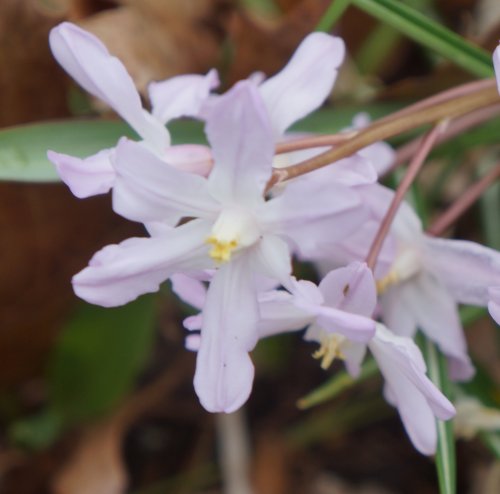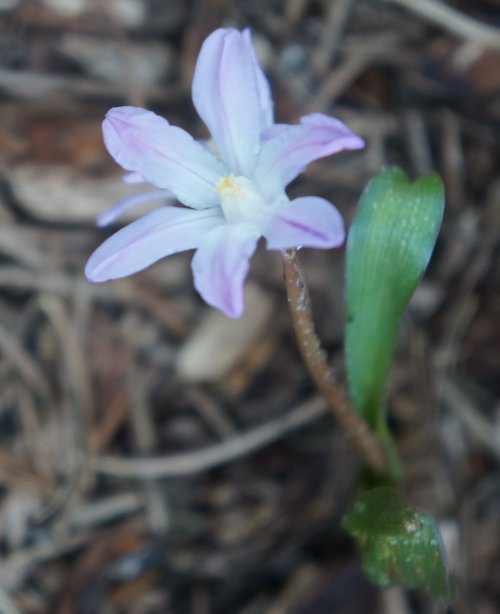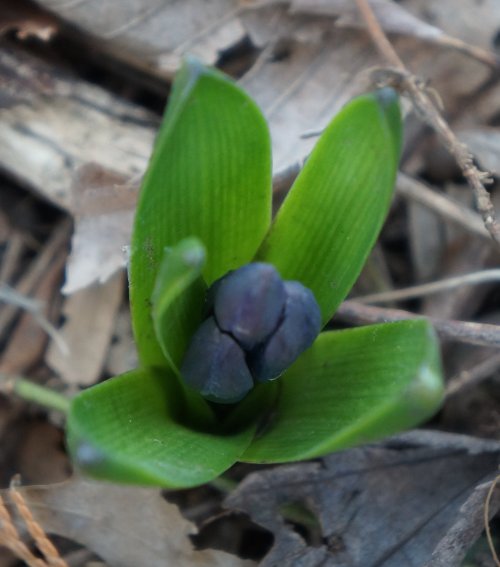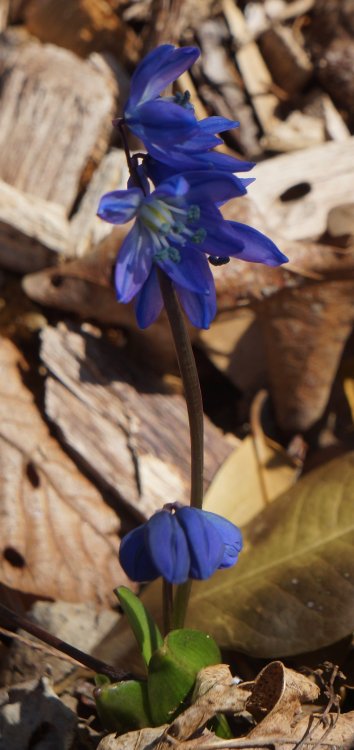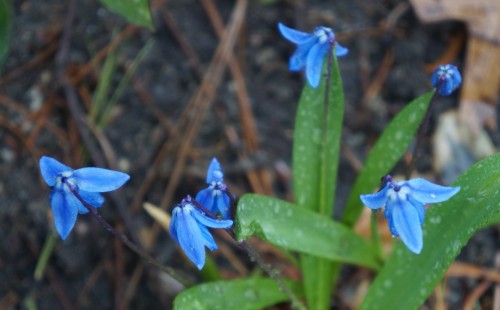
Glory of the snow, Chionodoxa sp., is a beautiful little spring bulb from Turkey. The dark blue petals with white toward the center are distinctive, and presumably act as nectar guides for polinators.
These were planted at the Grounds for Sculpture in Trenton, and they are fairly uncommon and inconspicuous in the area, but I have meant for years to put some in for myself, as I love the brilliant color so early in the year.
Glory of the snow is a monocot, with parallel-veined, grass-like leaves and flower parts in threes. The three petals and three sepals look nearly identical. They are fused at the base to form a tube.
It is related to asparagus, liy of the valley, trilliums and Solomon's seal, of which only Solomon's seal grows wild near here.

